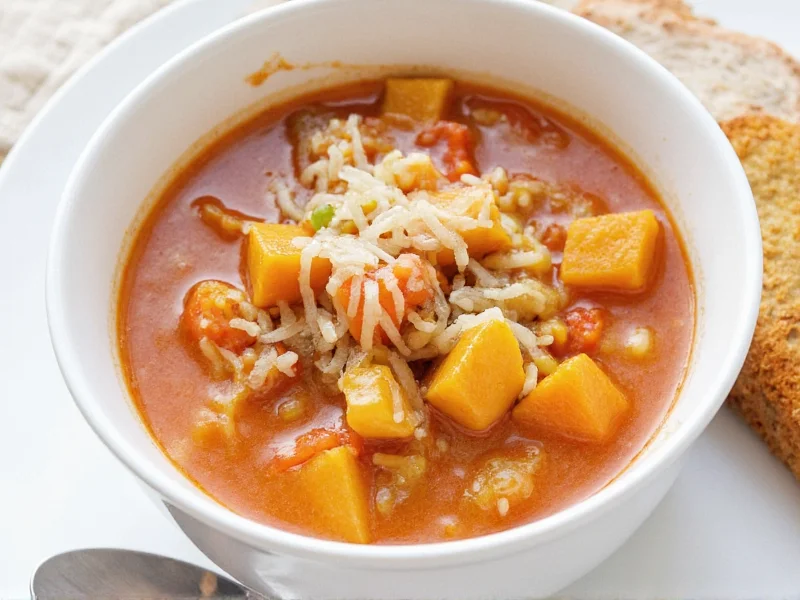Understanding Weight Watchers' ZeroPoint foods system is essential for maximizing your weight loss journey. Zero point soups represent one of the most satisfying and flexible options within the program, offering a filling meal that aligns perfectly with healthy eating principles. These soups work because they're built exclusively from ingredients the program considers so nutritious they don't require point tracking.
The Science Behind Zero Point Soups
Weight Watchers classifies certain foods as ZeroPoint foods based on their high nutritional density and satiety value relative to calories. For soups to qualify as zero points, they must be broth-based (not cream-based) and contain only approved ZeroPoint ingredients. The program specifically designates non-starchy vegetables, certain beans and legumes, and fat-free broth as ZeroPoint components for soup preparation.
When properly prepared, these soups deliver substantial volume and fiber with minimal caloric density. Research shows that high-volume, low-energy-density foods like vegetable soups can increase satiety while reducing overall calorie intake—a principle supported by nutrition science for sustainable weight management.
Approved Ingredients for Zero Point Soups
Not all vegetables and proteins qualify as ZeroPoint ingredients. The program maintains specific criteria that must be followed precisely to ensure your soup remains point-free.
| Category | Approved ZeroPoint Ingredients | Ingredients That Add Points |
|---|---|---|
| Vegetables | Broccoli, cauliflower, spinach, kale, zucchini, mushrooms, bell peppers, onions, celery, tomatoes | Starchy vegetables (potatoes, corn, peas) |
| Proteins | White beans, lentils, chickpeas (in specific quantities) | Meats with visible fat, processed meats |
| Liquids | Vegetable broth (fat-free), chicken broth (fat-free) | Cream, coconut milk, oil-based broths |
| Seasonings | Herbs, spices, vinegar, lemon juice | Oil, butter, high-sodium sauces |
5 Zero Point Soup Recipes That Actually Satisfy
Mediterranean Vegetable Minestrone
This vibrant soup combines tomatoes, zucchini, bell peppers, onions, and spinach with white beans for protein. Sauté onions and garlic in a non-stick pan, add 4 cups fat-free vegetable broth, diced tomatoes, chopped vegetables, and ½ cup rinsed white beans. Simmer for 20 minutes and finish with fresh basil. The fiber-rich vegetables and lean protein keep you full for hours.
Spicy Black Bean and Kale Soup
Combine 4 cups fat-free chicken broth, 1 cup rinsed black beans, diced tomatoes, minced jalapeño, and chopped kale. Add cumin, chili powder, and garlic. Simmer for 15 minutes until kale wilts. The capsaicin in peppers may boost metabolism slightly while providing deep flavor without points.
Asian-Inspired Miso Soup
Create a flavorful base with 4 cups fat-free vegetable broth, 1 tablespoon miso paste (dissolved in warm water), sliced mushrooms, bok choy, and scallions. Add tofu cubes (check your plan's specific guidelines for tofu) and simmer gently—never boiling miso to preserve probiotics. Finish with rice vinegar and red pepper flakes.
Hearty Minestrone with Cannellini Beans
Sauté onions, carrots, and celery, then add 4 cups broth, diced tomatoes, zucchini, spinach, and ½ cup rinsed cannellini beans. Season with Italian herbs. This classic preparation delivers complex flavors and textures while staying completely within ZeroPoint parameters when prepared correctly.
Creamy (But Zero Point) Cauliflower Soup
Steam 1 head of cauliflower until tender, then blend with 2 cups fat-free vegetable broth, garlic, and nutritional yeast until smooth. The natural creaminess comes from the cauliflower's texture, not added fats. This clever preparation satisfies creamy soup cravings without points.
Common Mistakes That Add Points to Your Soup
Many home cooks accidentally add points to their zero point soups through common preparation errors:
- Using oil for sautéing - Even one teaspoon adds points. Use non-stick spray or broth for sautéing instead
- Adding starchy vegetables - Corn, peas, and potatoes immediately add points
- Using regular broth - Some broths contain hidden fats or sugars; always verify fat-free versions
- Overestimating bean portions - While beans are ZeroPoint foods, some plans have quantity limits
- Adding finishing oils - Drizzling olive oil before serving adds significant points
Maximizing Satisfaction with Zero Point Soups
To make your zero point soups more satisfying and prevent snacking later:
- Include protein sources - Add approved beans or legumes to increase satiety
- Boost volume with extra vegetables - More vegetables mean more fiber and volume without points
- Add texture contrast - Top with zero point ingredients like chopped celery or radishes
- Use aromatic herbs - Fresh herbs create complex flavors that satisfy cravings
- Make it a complete meal - Pair with another zero point food like egg whites for balanced nutrition
Meal Planning with Zero Point Soups
Strategic meal planning enhances the effectiveness of zero point soups in your Weight Watchers journey. Prepare large batches on weekends for easy weekday meals—soups freeze exceptionally well in portion-sized containers. Consider having soup as your main lunch item, paired with a protein-rich zero point food to create a balanced meal that keeps you satisfied until dinner.
Many successful Weight Watchers participants use zero point soups as a "reset" option when facing cravings or after less disciplined eating days. The high water and fiber content helps reduce overall calorie intake while providing essential nutrients.











 浙公网安备
33010002000092号
浙公网安备
33010002000092号 浙B2-20120091-4
浙B2-20120091-4